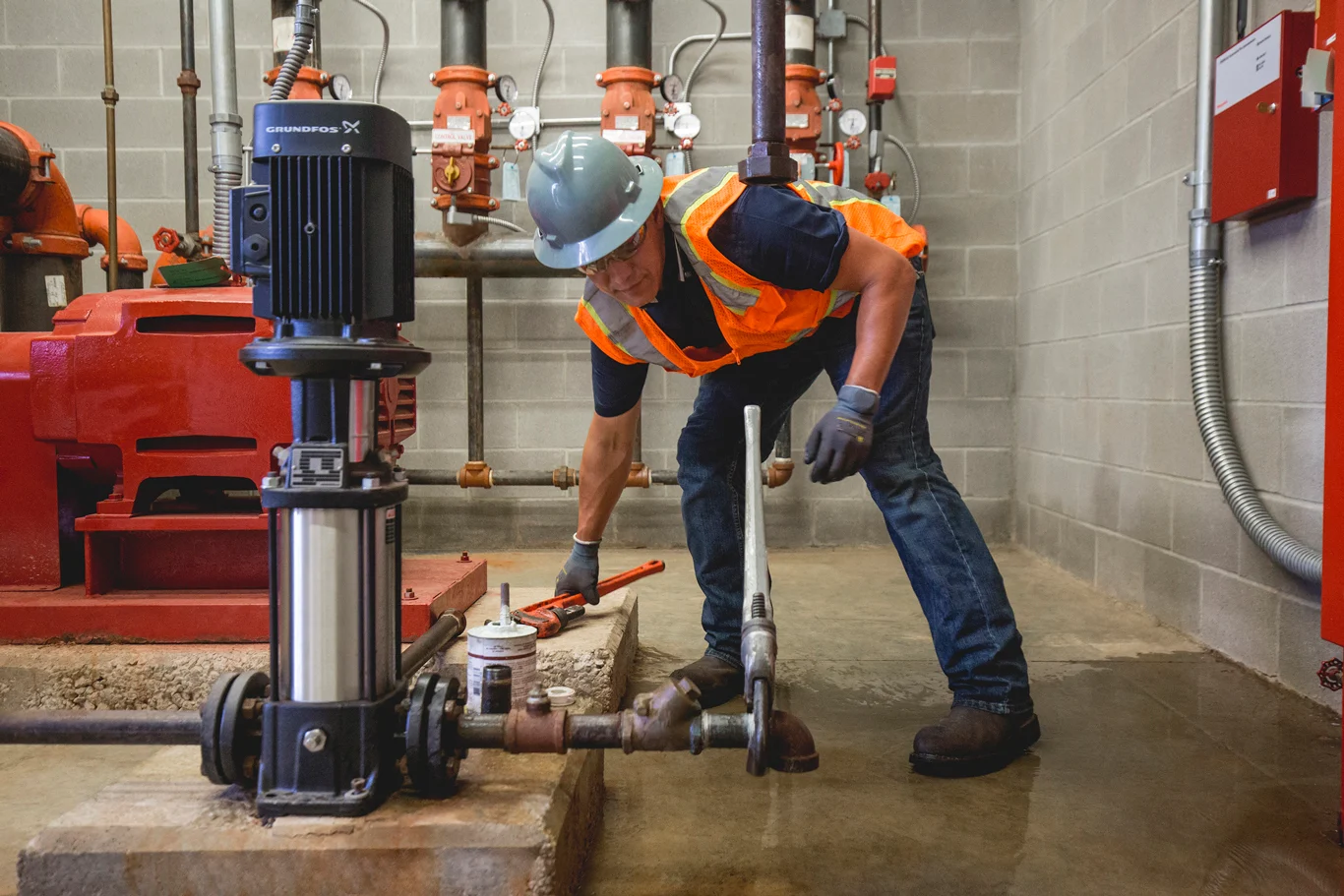What Is a Fire Pump and Why Is It Important?
A fire pump is a key component of a building’s fire protection system, designed to deliver high-pressure water to sprinklers and hose standpipes in the event of a fire. It plays an essential role in maintaining the necessary water flow and pressure to suppress or extinguish fires, especially in high-rise buildings, industrial facilities, warehouses, and other large structures where a regular water supply may not be strong enough on its own.
Fire pumps are typically powered by electric motors or diesel engines and are automatically activated when water pressure in the fire sprinkler system drops below a preset level. This drop is usually triggered when a sprinkler head opens during a fire emergency. Without a fire pump, many fire suppression systems would be ineffective, particularly in larger or more complex buildings.
How Fire Pumps Work
Fire pumps work by drawing water from an external source—such as a municipal water line, tank, or reservoir—and increasing the pressure so that water can effectively reach every part of the fire protection system. When activated, the pump sends pressurized water through the piping network to sprinkler heads, hose reels, or fire hydrants.
There are several different types of fire pumps, including centrifugal pumps, vertical turbine pumps, and positive displacement pumps. Centrifugal pumps are the most common type and are well-suited for buildings with high water demand. Vertical turbine pumps are used when the water source is below ground level, such as in wells or underground tanks.
Types of Fire Pumps
There are various types of fire pumps, each designed for specific situations. The most commonly used fire pumps include horizontal split case pumps, vertical inline pumps, end suction pumps, and vertical turbine pumps. Horizontal split case pumps are popular in large commercial and industrial settings because of their reliability and ease of maintenance.
End suction pumps are more compact and are suitable for smaller buildings or installations with limited space. Vertical inline pumps are vertically mounted and are often used where floor space is limited. Each type has its advantages and should be selected based on the water supply source, system requirements, and the layout of the property.
Key Features of a Reliable Fire Pump
When choosing a fire pump system, several key features should be considered. These include flow rate (measured in gallons per minute), pressure rating, motor type (electric or diesel), controller system, and the quality of materials used in construction. A good fire pump should meet the standards set by regulatory bodies such as NFPA (National Fire Protection Association) and be UL (Underwriters Laboratories) or FM (Factory Mutual) approved.
Fire pumps must also be tested regularly and maintained according to manufacturer guidelines to ensure reliability in emergencies. Many systems include automated testing features that simulate real conditions and confirm system readiness without the need for actual sprinkler activation.
Installation and Placement of Fire Pumps
Proper installation is critical for the performance of a fire pump. It must be installed in a dedicated fire pump room that is easily accessible, protected from fire hazards, and built according to local codes and regulations. This room should house not only the pump itself but also controllers, valves, fuel tanks (if applicable), and pressure maintenance systems.
The fire pump suction source must be dependable, with an adequate supply of water and no air leaks. Suction and discharge piping must be properly sized and supported to avoid pressure drops, cavitation, or mechanical failure. Careful planning of pump placement ensures optimal performance and ease of maintenance.
Maintenance and Testing for Performance Assurance
Regular maintenance and inspection of fire pumps are not just best practices—they are required by law in many areas. Fire pumps must undergo weekly inspections and monthly no-flow tests to ensure that the system is functioning correctly. Annual flow testing is also mandated to verify that the pump can meet the design flow and pressure requirements.
During maintenance checks, technicians inspect mechanical seals, couplings, electrical connections, valves, and alarm systems. The pump controller must also be checked for functionality, and any signs of wear, rust, or leaks should be addressed immediately. Diesel-powered fire pumps require fuel system checks, battery tests, and engine maintenance as part of routine servicing.
Common Issues That Affect Fire Pump Performance
Like any mechanical system, fire pumps can experience problems if not properly installed or maintained. Common issues include cavitation (when air bubbles form in the water stream), clogged filters, worn-out seals, broken impellers, or electrical faults. These problems can severely reduce a pump’s efficiency or cause it to fail during a critical moment.
Another major concern is lack of water supply due to closed valves or a depleted tank. System monitoring and routine checks are vital to identifying and correcting these issues before they result in fire protection system failure.
Integration with Fire Alarm and Supervisory Systems
Modern fire pump systems are often integrated with a building’s fire alarm and supervisory system to ensure automatic response and remote monitoring. When the system detects a drop in pressure or a signal from a fire detection device, the controller activates the pump and triggers alarms that notify the fire department or building personnel.
Supervisory systems also provide fault detection, track maintenance records, and monitor water flow to confirm that the system is operational at all times. These integrations add an extra layer of safety and reliability to the overall fire protection infrastructure.
Applications and Industries That Rely on Fire Pumps
Fire pumps are used in a wide variety of settings. High-rise residential and commercial buildings depend on fire pumps to deliver water to the upper floors. Hospitals, schools, data centers, warehouses, and manufacturing plants also rely heavily on fire pump systems to ensure that fire protection remains consistent and effective.
In areas where municipal water pressure is unreliable or insufficient, fire pumps are even more critical. Fire pumps are also essential in places storing hazardous materials, where a fire could result in widespread damage or health risks.
Conclusion: The Lifeline of Fire Suppression
A fire pump is far more than just a piece of equipment—it is a life-saving mechanism that ensures your fire protection system works when you need it most. Whether it’s protecting a high-rise office, an industrial plant, or a local school, fire pumps provide the pressure needed to contain and suppress fires before they escalate.
Proper selection, installation, testing, and maintenance position fire pumps as a reliable first line of defense against one of the most dangerous threats any property can encounter. Understanding their function and importance helps individuals and organizations make smarter choices about fire safety infrastructure.

